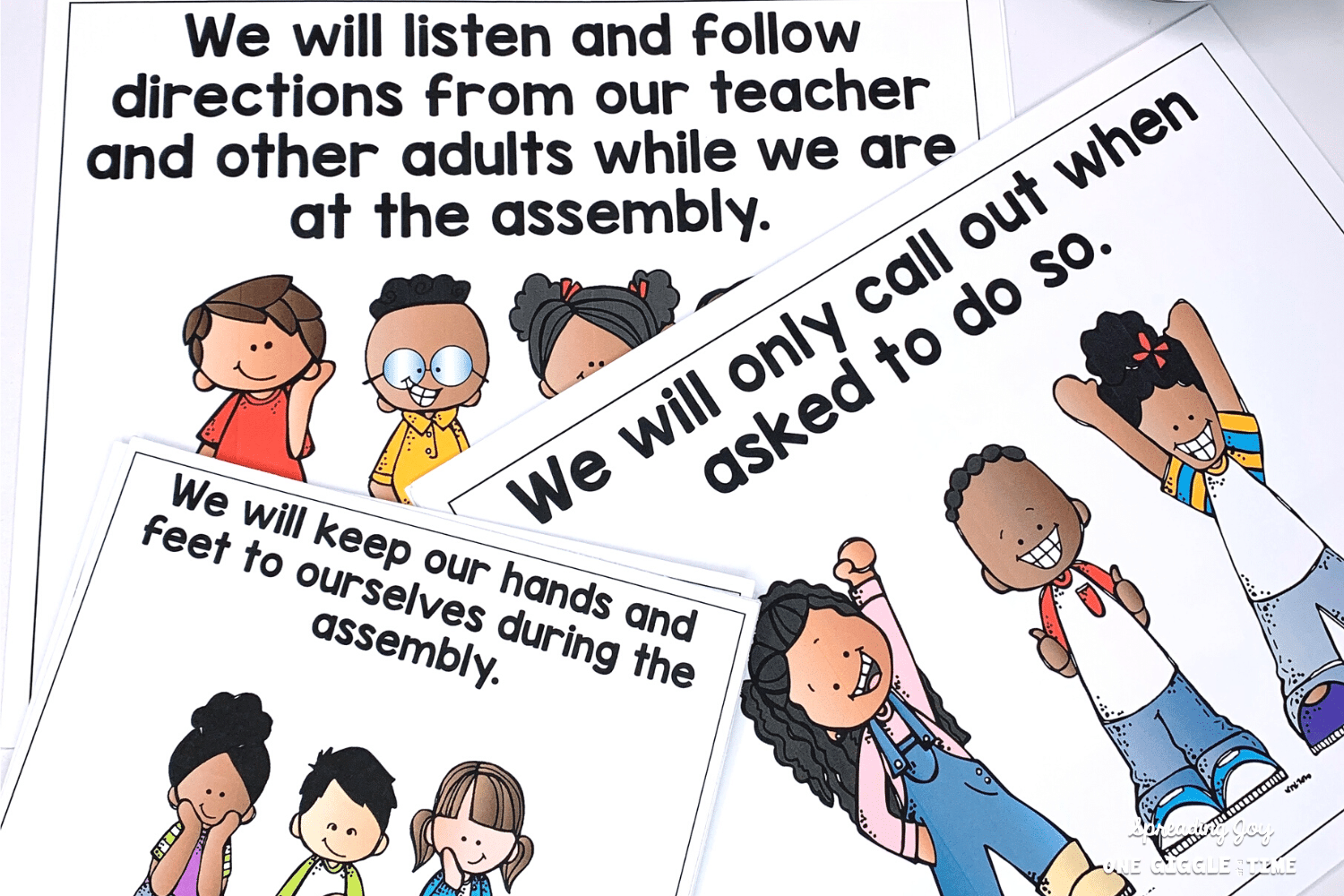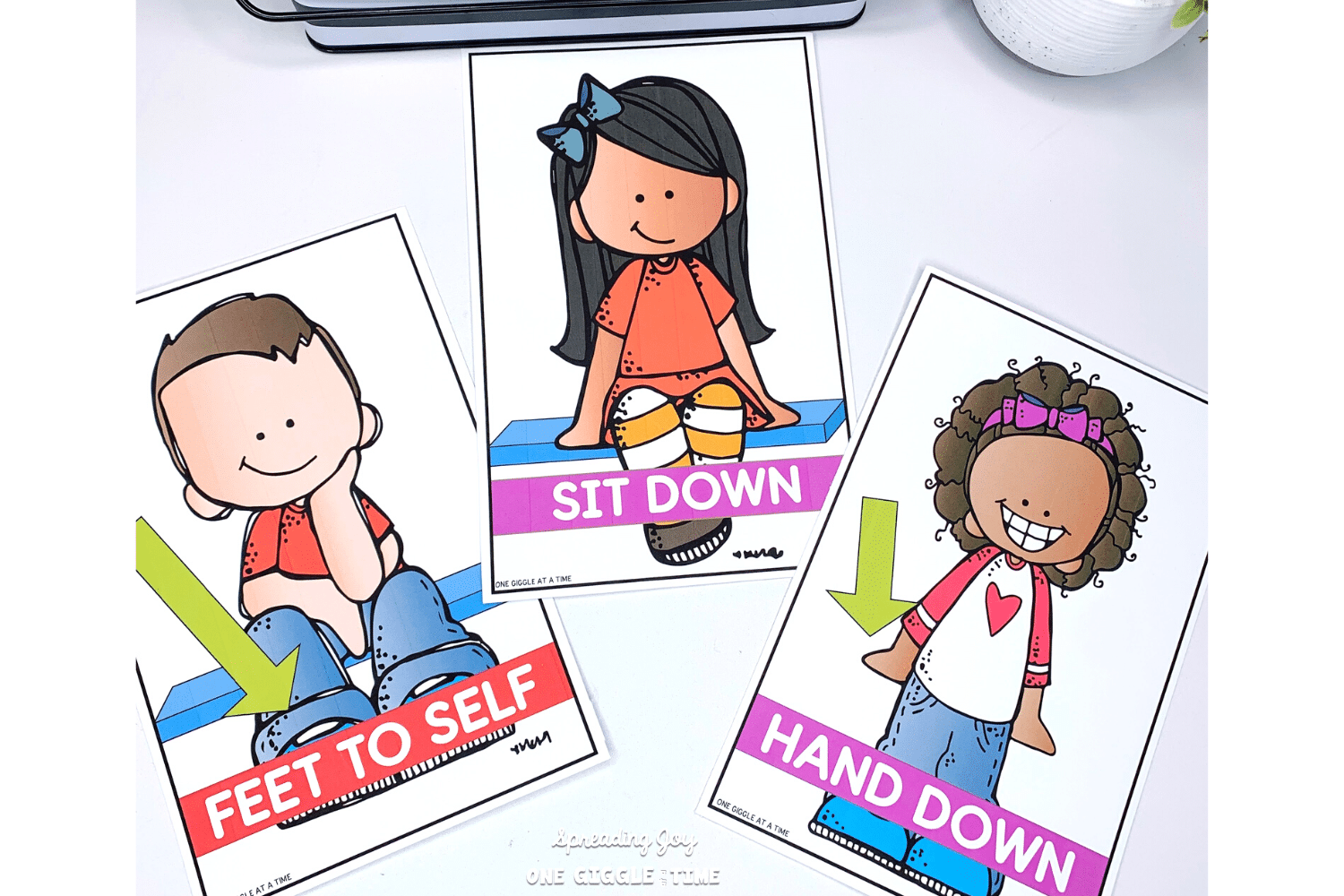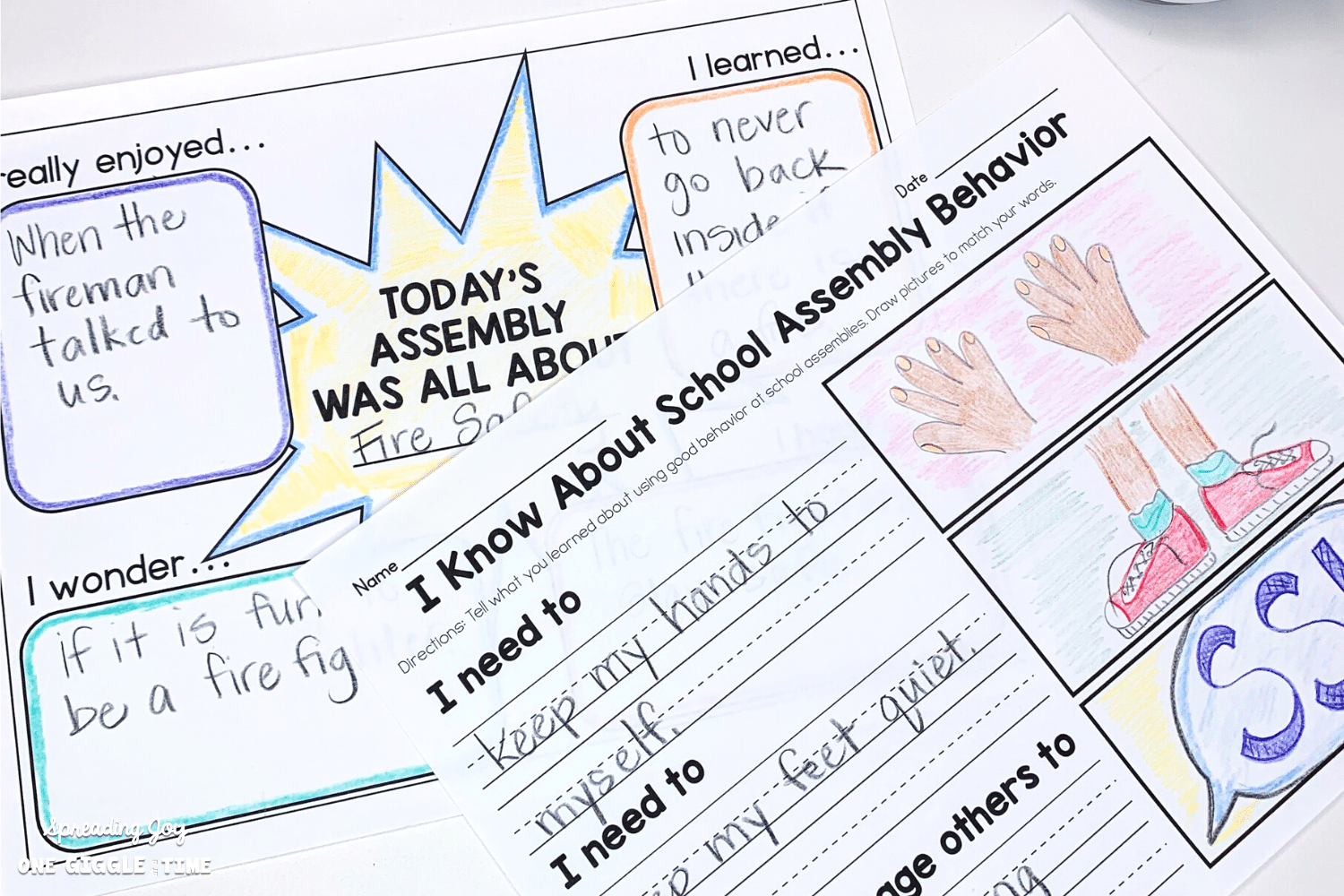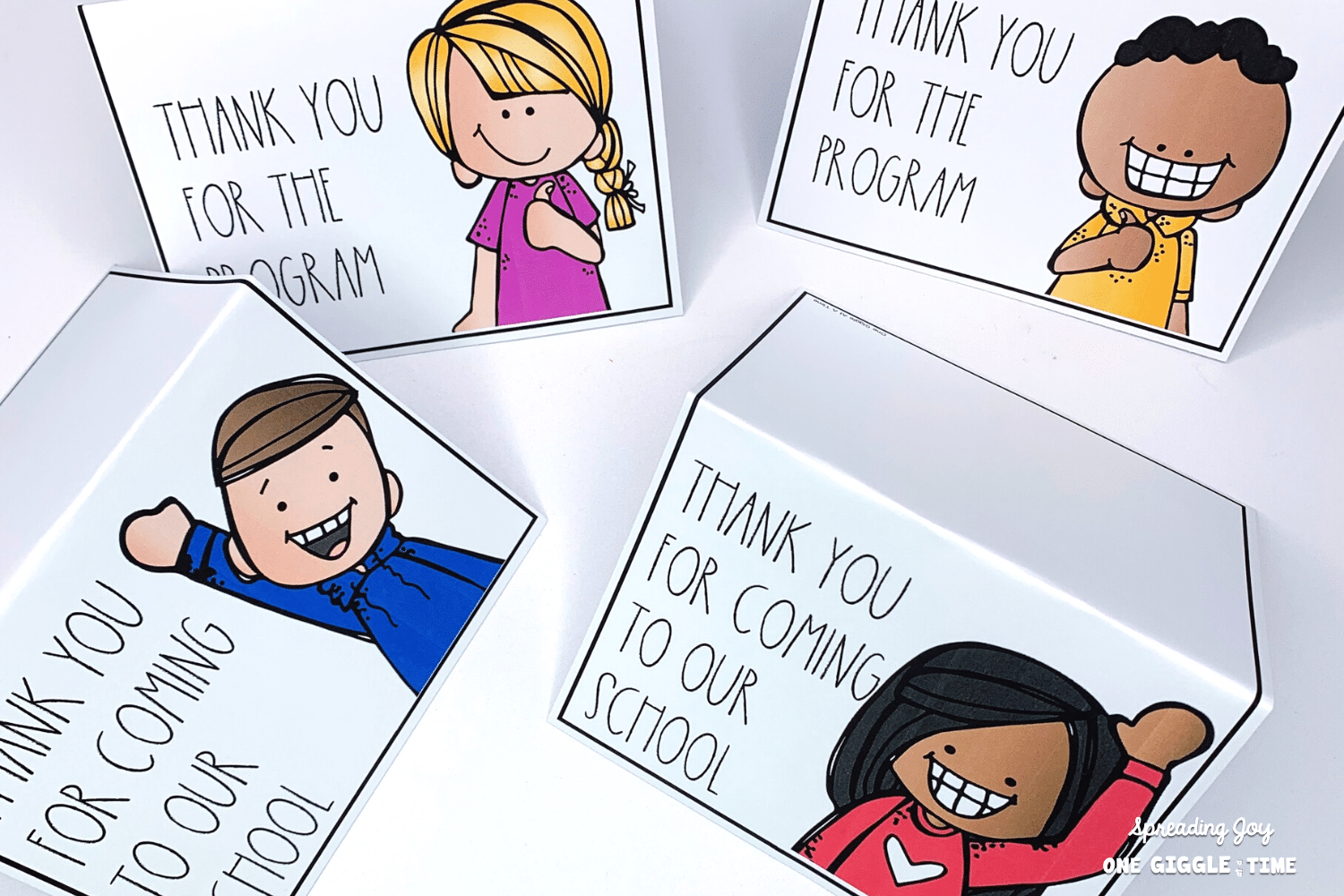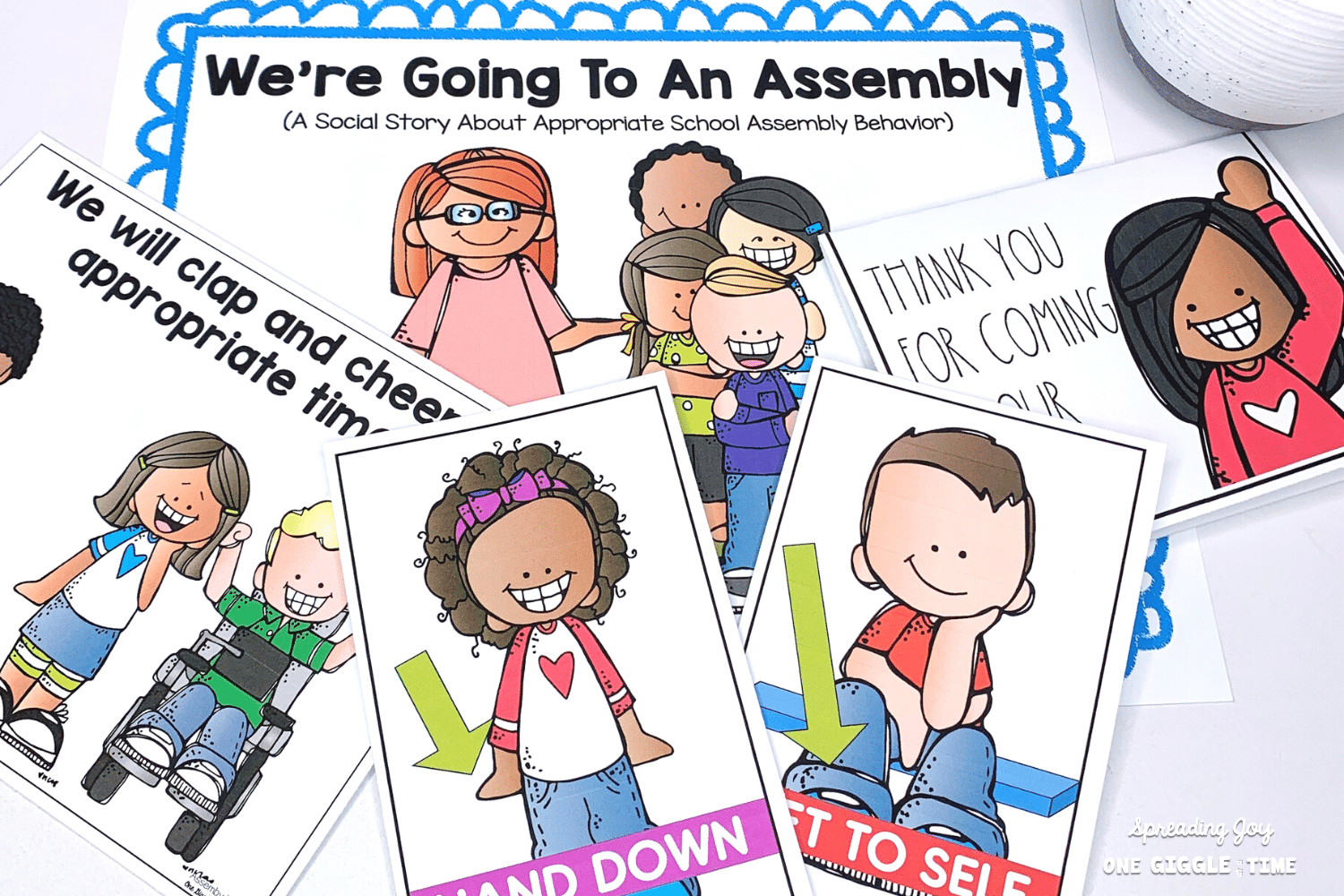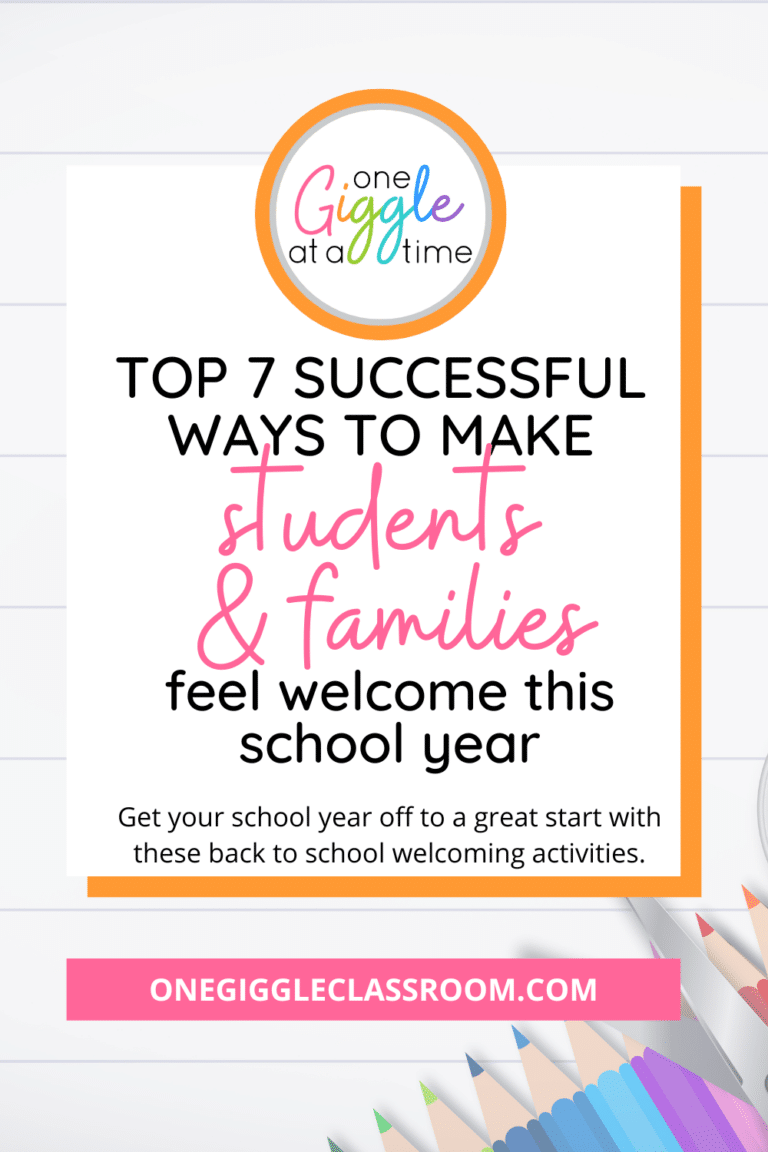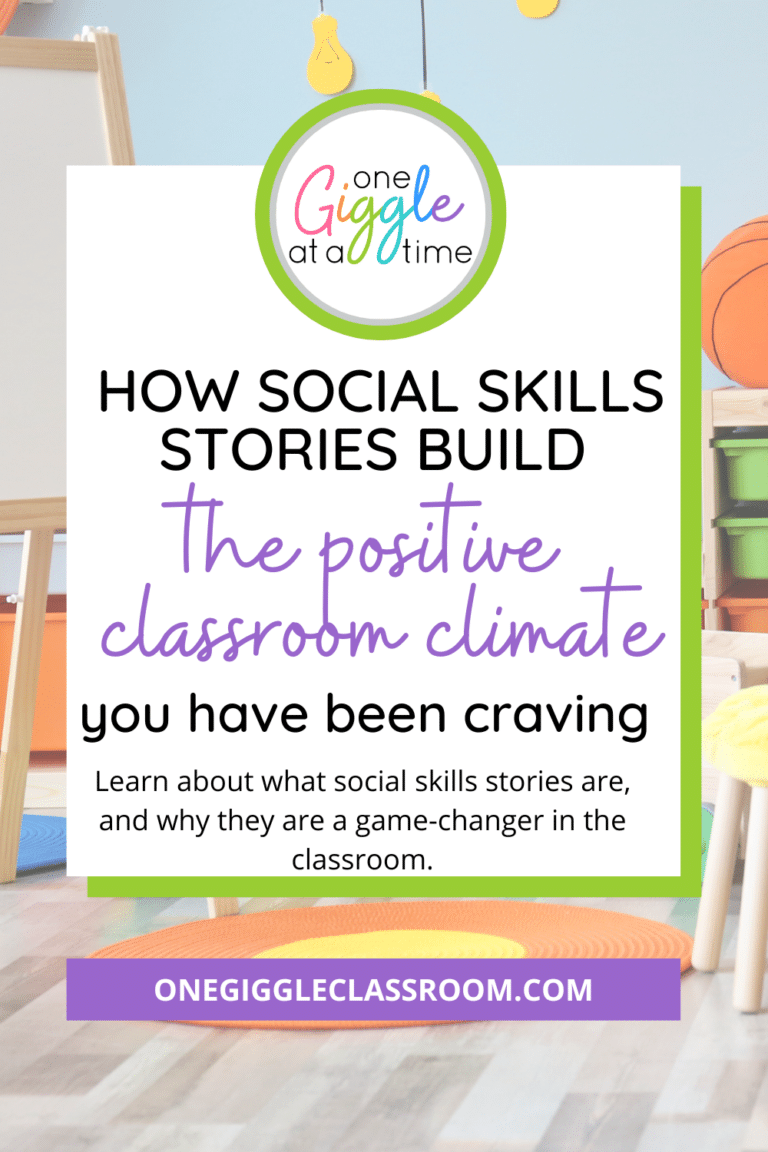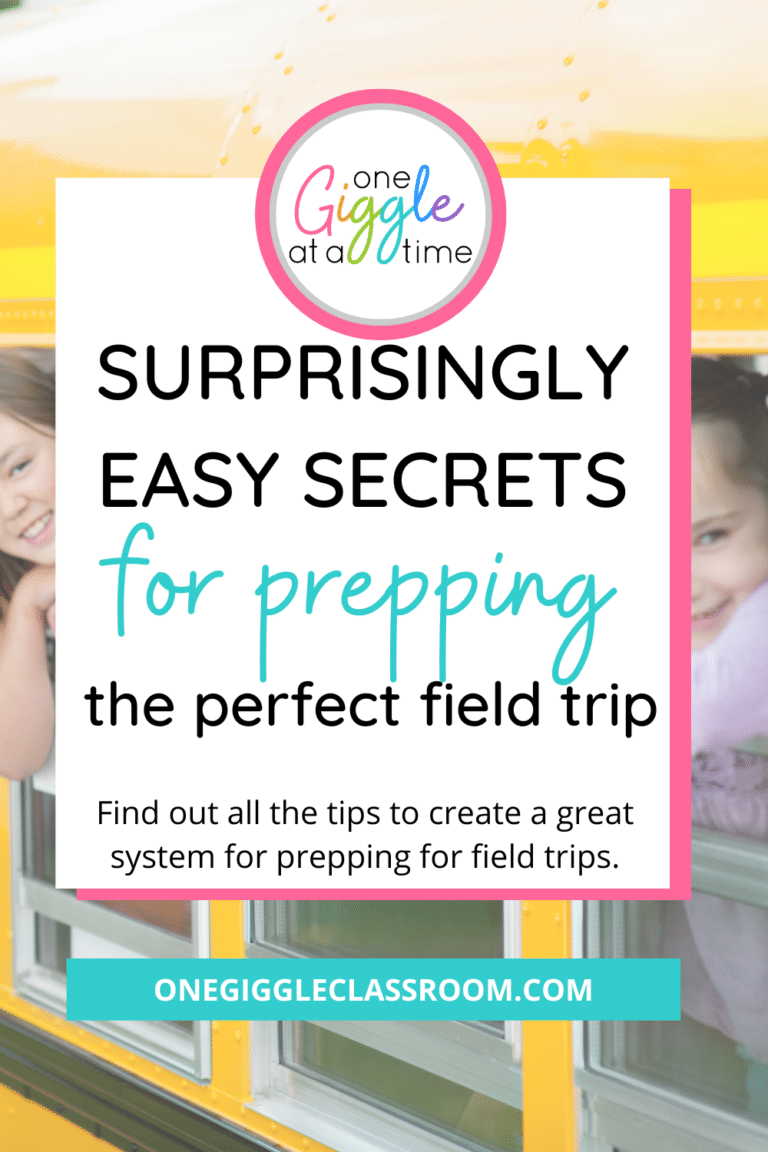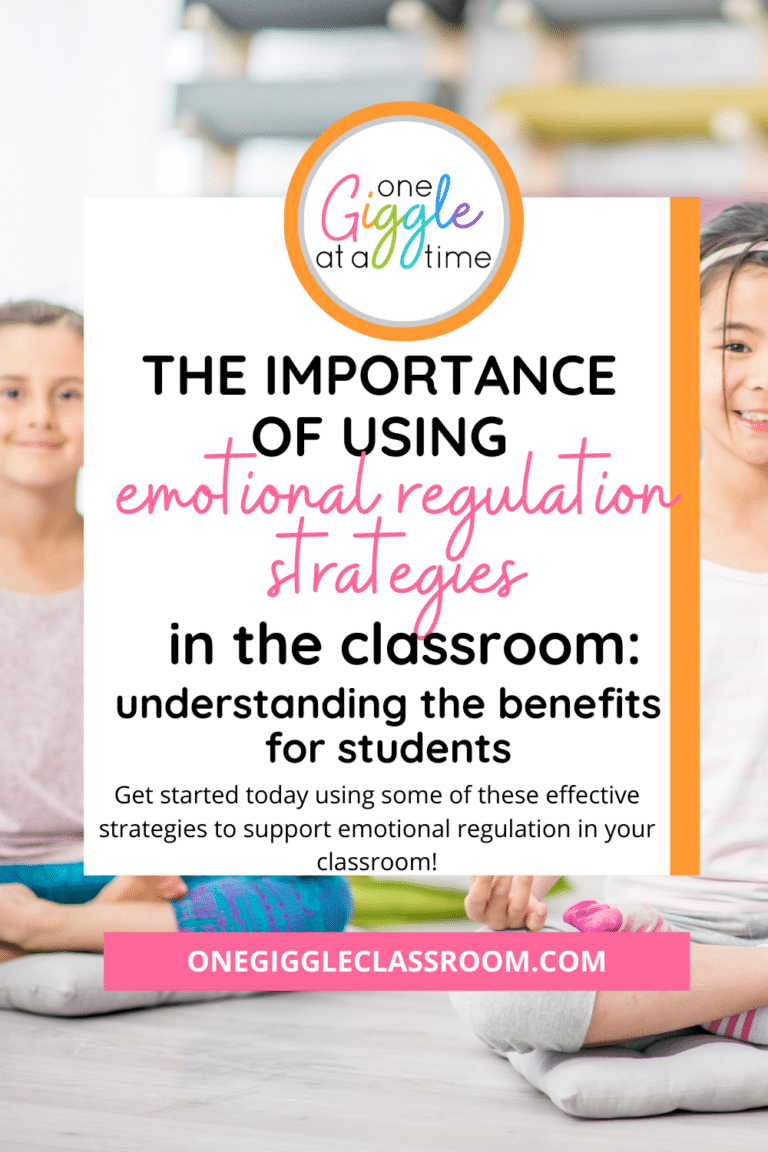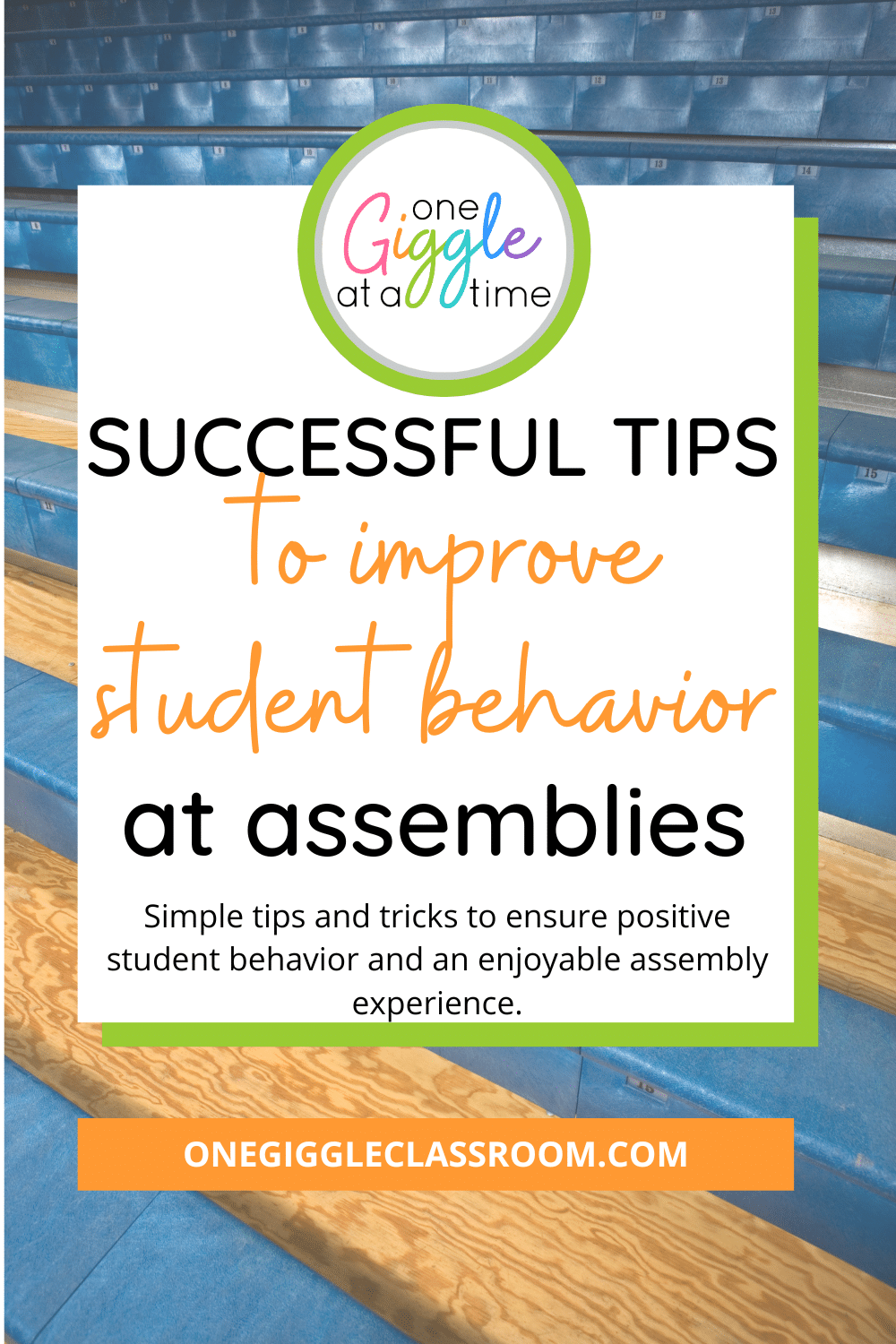
Successful Tips How To Improve Student Behavior At Assemblies
Share This:
School assemblies are a great way to bring together students and faculty, but they can also be chaotic if not managed properly. To ensure positive student behavior and an enjoyable assembly experience, try some of these simple tips and tricks to help manage student behavior during school assemblies.
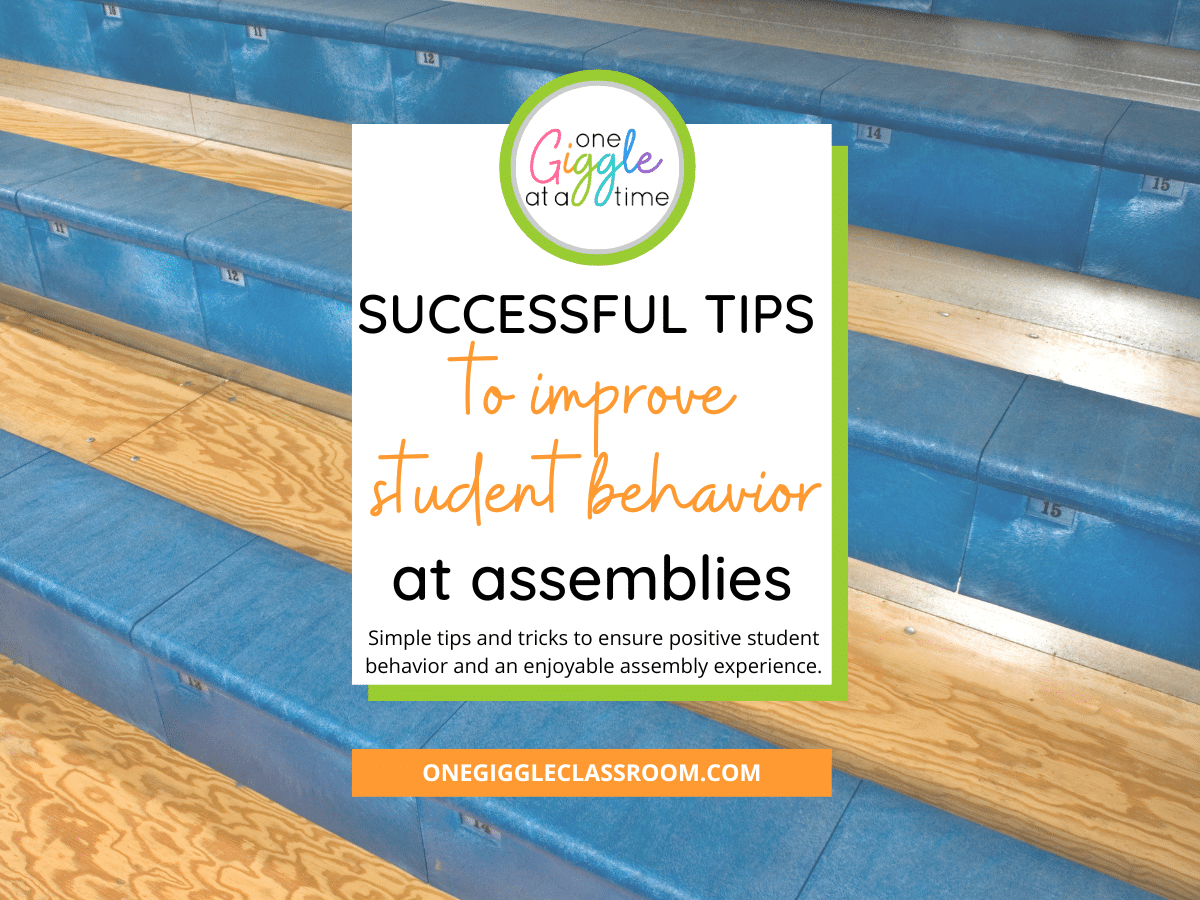
5 Tips to Improve Student Behavior at Assemblies
1. PROVIDE STUDENTS WITH CLEAR ASSEMBLY EXPECTATIONS
First and foremost, students need to know what to expect. We cannot assume that all the students in our class have the same experience and understanding of what an assembly or program is.
Perhaps the assembly you are attending is one with serious undertones (think Veteran’s Day or an awards assembly), but maybe some of your students have only experienced silly, loud assemblies, with music playing and lights flashing.
Or maybe it’s the opposite. They are expecting a very serious, somber event when in reality it is a program where they will be expected to dance and act and participate.

Prepare your students for an upcoming assembly or program a few days or even a week in advance. Activate their prior knowledge on the subject being addressed and the format of the program they will be attending.
- Where will the assembly take place?
- Will they be sitting on the floor, on chairs, on bleachers?
- Will they be asked to answer questions?
- Will there be loud music?
- Will there be volunteers called up during the assembly?
You are not always going to have access to all this information, but the more information you can give your students ahead of time, the better behaved they will be!
2. DISCUSS BEHAVIOR EXPECTATIONS
Talk to your students ahead of time about the expectations for behavior during assemblies.
This will help ensure everyone is on the same page when it comes to what type of behavior is appropriate, and give them an idea of the consequences for inappropriate behavior.
Setting expectations for how students should behave in an assembly setting can help ensure everyone involved has a good time and that no one’s educational experience is jeopardized by disruptive behavior.
This social skills story, which is part of the School Assembly Social Skills Activities pack, is a great way to get the discussion started.
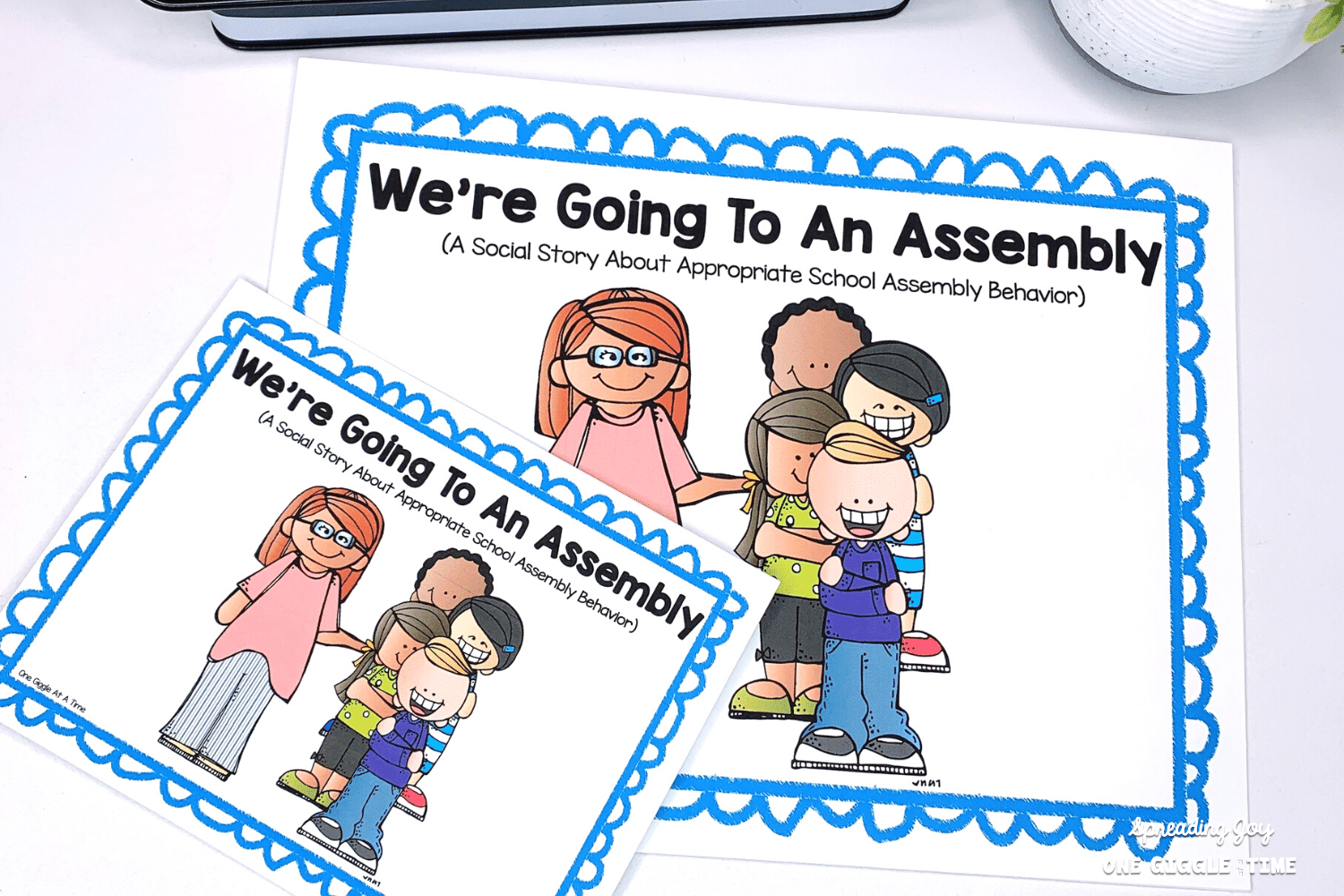
It is written in kid-friendly language and provided in a printable PDF version, a Google Slides version, and a video version where the pages are narrated by the author.
This story is particularly great because it covers all the different student behaviors that teachers encounter in school assemblies, as well as explains exactly what an assembly is. There is even a personalized page option for you to choose the assembly location used most often at your school (gym, cafeteria, auditorium, cafetorium).
This social skills story covers:
- What an assembly is
- What to expect at an assembly
- Rules and procedures that need to be followed at an assembly including:
- Following directions
- Listening
- Being respectful
- Using good manners
- Clapping only when appropriate
- Calling out only when asked to do so
- Staying seated
- Not talking or making noises
- Keeping hands and feet to self
- Coping skills for those who get anxious during assemblies
- Coping with not being called on to participate
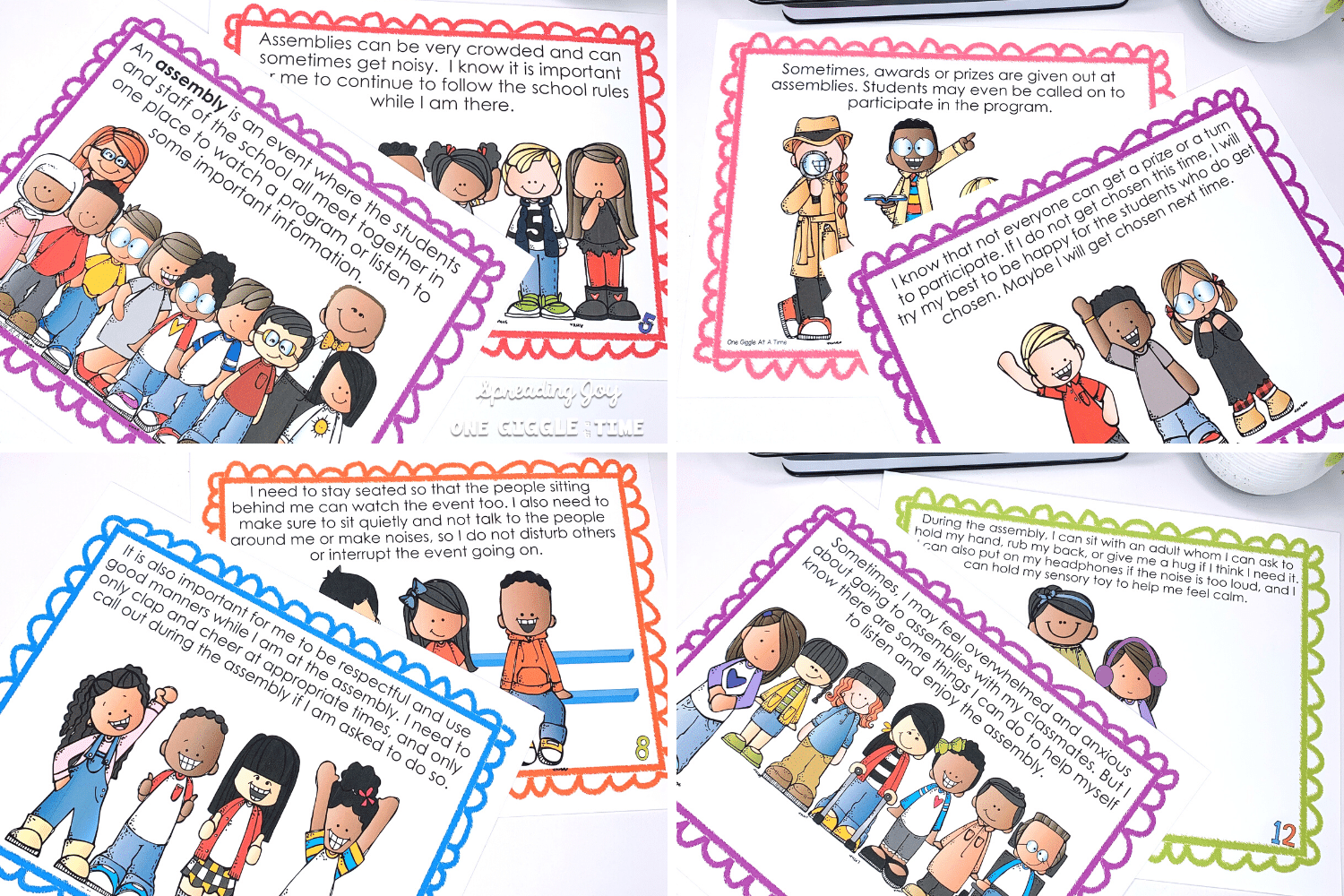
3. PRACTICE AND ROLE PLAY
After setting the expectations for the assembly and student behavior, practice together! Kids learn by doing, and they get most comfortable with new and different situations by trying those things out a few times.
Use the classroom posters found in the School Assembly Social Skills Activities pack to review the expectations with your students, and then dive into role play!
TEACHER TIP: Laminate the posters and put them on binder rings and then display them near their social skills story baskets, or in a nearby basket. You can quickly refer back to these posters when classroom behavior issues arise.
Visual student reference cards are a great way for students to remember expectations while role-playing!
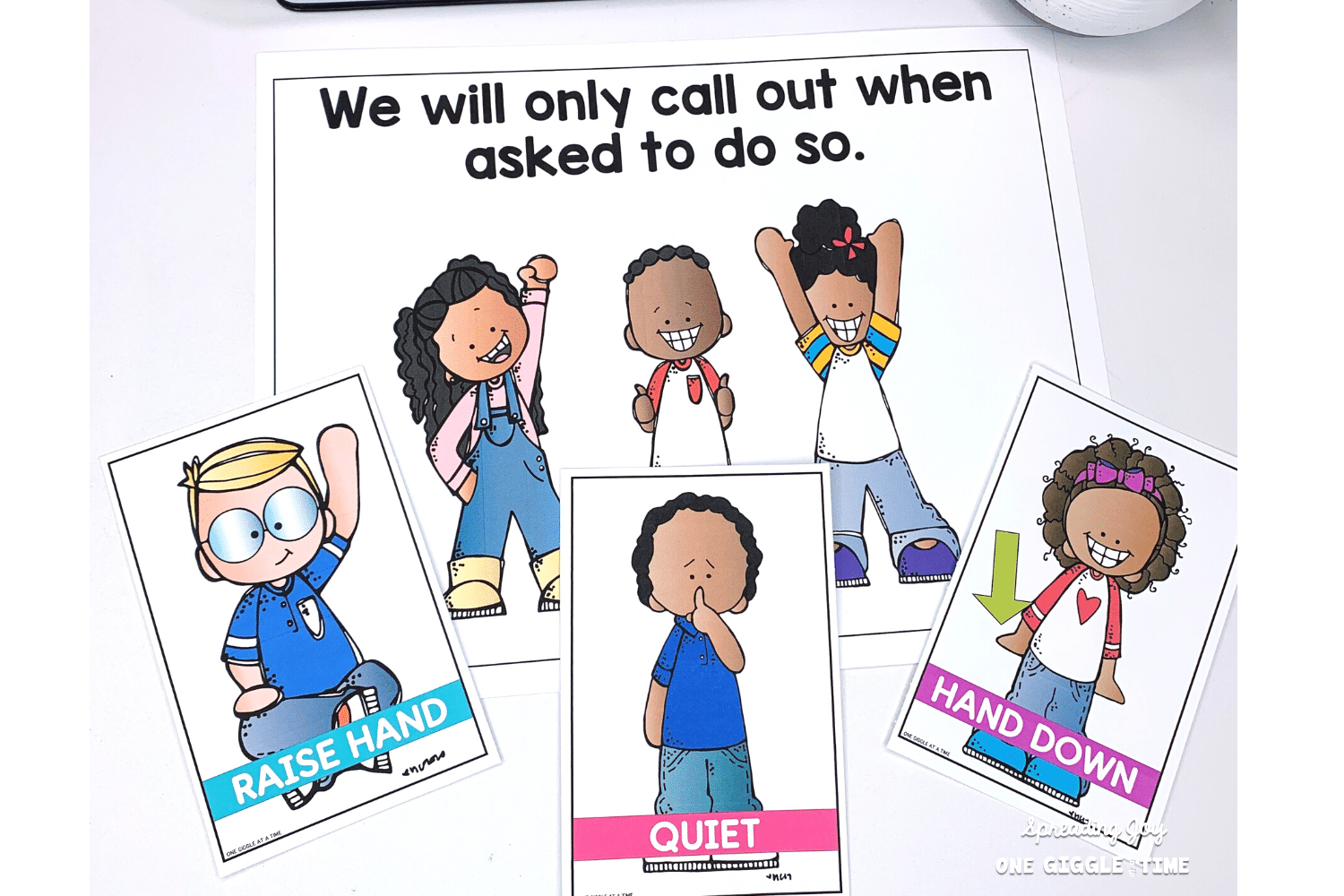
As you review each poster, discuss the expected behavior and scenarios that may arise.
Example with the visual “WE WILL ONLY CALL OUT WHEN ASKED TO DO SO”:
- Explain to students that sometimes during the assembly, the people running the assembly may ask questions of the audience. It is important to listen to the directions they give. Sometimes they may want us to answer out loud (callout), but sometimes they may want us to raise our hands. If they do want children to call out, once they have an answer and start talking to the audience again, that means it is time for us to stop calling out and listen.
- Show them the visual student reference cards and explain what expectations are depicted.
- Have them practice each of those actions (giving them clear expectations as to what this looks like in an assembly setting).
- Give a couple of sample scenarios (those that you have concerns about as far as behavior goes) to role-play.
- Use the visual student reference cards to show them the action/behavior you are expecting. (And explain why that is the behavior that is needed.)
- The person speaking says “I would like you to raise your hands to tell me who here is 7 years old?” (show raise hand card) (show quiet card)
- The person speaking holds their hand next to their ear and says “I am looking for a volunteer.” (choose someone) “That is all I need right now.” (show hands down card) (show quiet card)
You can also use these visual student reference cards during the assembly when you need to remind a student, who just happens to be the furthest away from you, of the appropriate behaviors of an assembly. Students will be familiar with the visuals since they’ve used them in role-play beforehand!
4. MONITOR BEHAVIOR DURING ASSEMBLIES
Monitor behavior during assemblies by planning ahead.
Leave enough time before the assembly starts to give your students a restroom break. This intentional break will cut down on the bathroom requests DRAMATICALLY during the assembly.
Stay close to your students at the assembly. Don’t get them seated in the bleachers and then go and stand on the other side of the gym. They will view this as a prime opportunity to act up, and act up BIG!
Also, be strategic in how your class is seated. Put those children that are most likely to act up or even those that are most likely to get upset during assemblies near you. If you need to, have assigned seats for assemblies. Plan out who is going to sit by who, and keep that seating chart consistent for every event and assembly. That way you can head off problems before you even get there.
Another great tip is to take those classroom posters with you. Get to the assembly location a little bit early and review the expectations with your students.
And for goodness sake…
DON’T FORGET YOUR VISUAL STUDENT REFERENCE CARDS!!!
These simple actions can drastically reduce the number of disruptions that you will need to take care of during school assemblies and help make sure that everyone is getting the most benefit from the event.
5. PROVIDE CLOSURE FOR STUDENTS WHEN THE ASSEMBLY IS OVER
After attending a program or an assembly, students will benefit greatly from having a “class meeting” moment or two to discuss the event together.
This helps them not only to process what they learned at the assembly but also shows them that there is importance in attending assemblies, and therefore they will have more respect for using their best behavior in the future– big win for positive classroom management!
Discuss how they did with their behavior. Praise what they did well. Gently remind them of what they may want to work on at future assemblies.
Discuss the events of the assembly:
- what did they learn?
- what do they still wonder?
- what did they enjoy?
These activity/assessment sheets are perfect for use after an assembly. They come in the School Assembly Social Skills Activity Pack.
While you’re in this “Closure Moment” with your students, teach them to show gratitude toward not only the presenters but also the organization that has made the assembly possible for them. Having your students write thank you letters or cards is the perfect way to show gratitude and also bring final closure to the event.
These thank you cards are perfect for such an occasion. They come in both color and a black and white version so that students can add their own creativity to their projects, and you as the teacher can model showing gratitude by using the colored version of the cards.
You will also find these thank you cards in the School Assembly Social Skills Activity Pack.
Begin putting these management tips into practice in your classroom, and I am certain that you will see an improvement in the behavior of your students at the next school assembly!
Let me know if you have any questions about anything you see here. Don’t forget to pin this post to refer to it later!
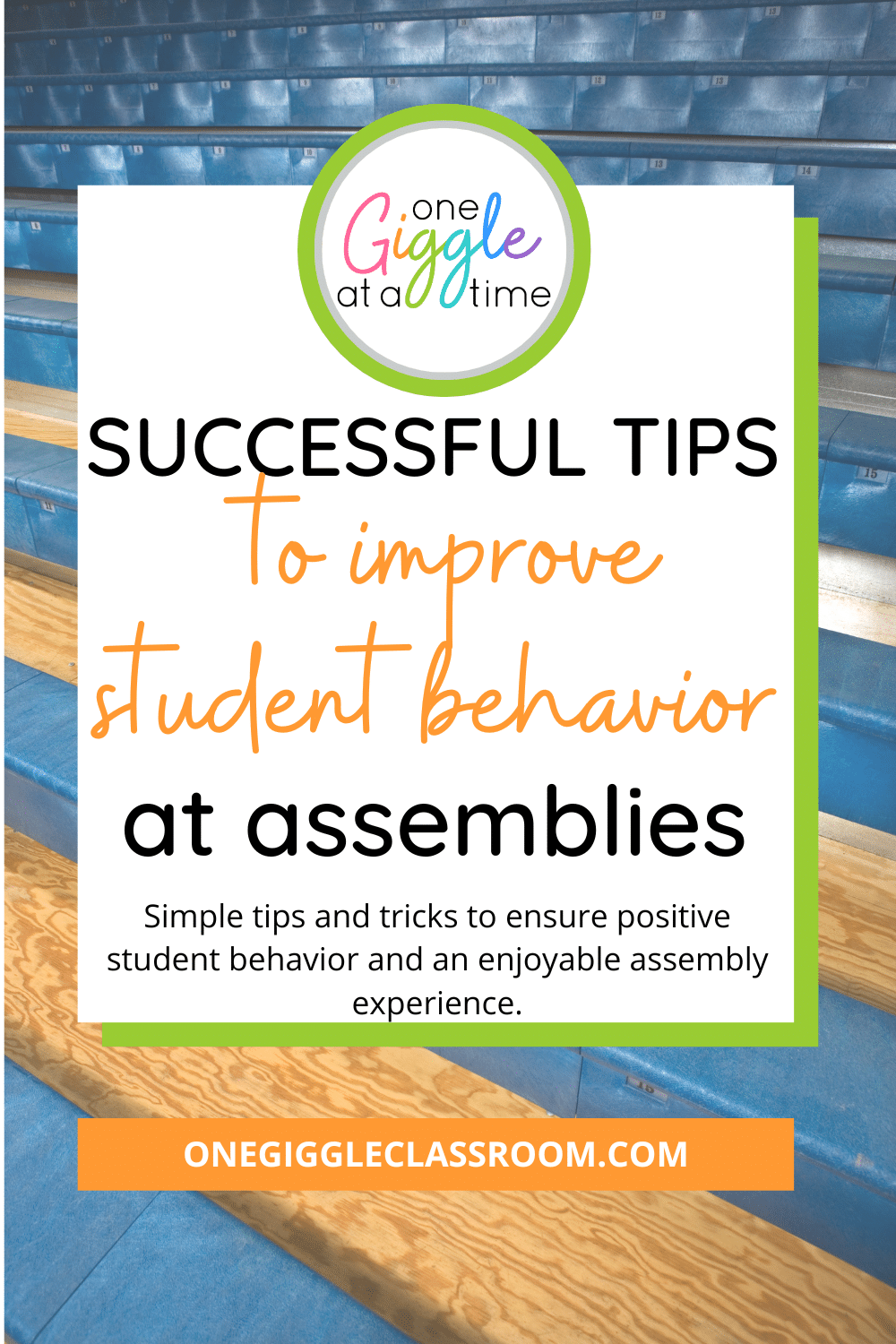
Other posts you may enjoy:
Most Important Classroom Routines and Procedures
Prepping the Perfect Field Trip
How To Successfully Prepare Your Child For A Smooth Transition To Kindergarten
KEEP HALLWAY BEHAVIOR ON TRACK WITH THIS
Free Secret Walker Kit
Monitoring hallway behavior has never been so easy and so motivating!
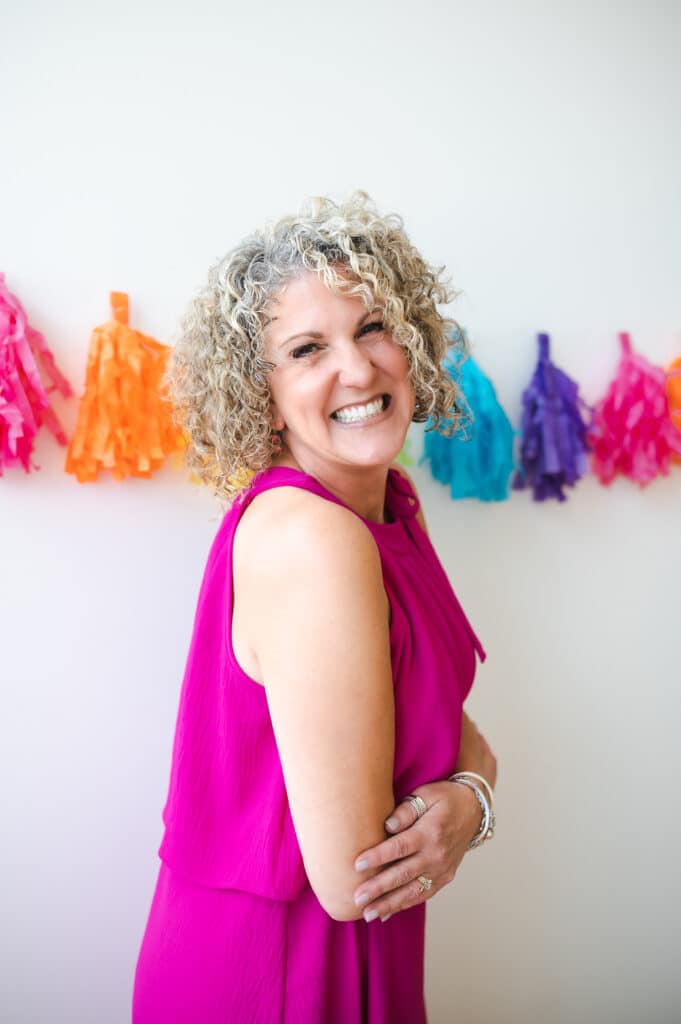

Diane Romo
Thank you for being here! I love sharing ideas with other teachers! If you are looking to enhance your teaching and build a positive classroom community, you have come to the right place!







